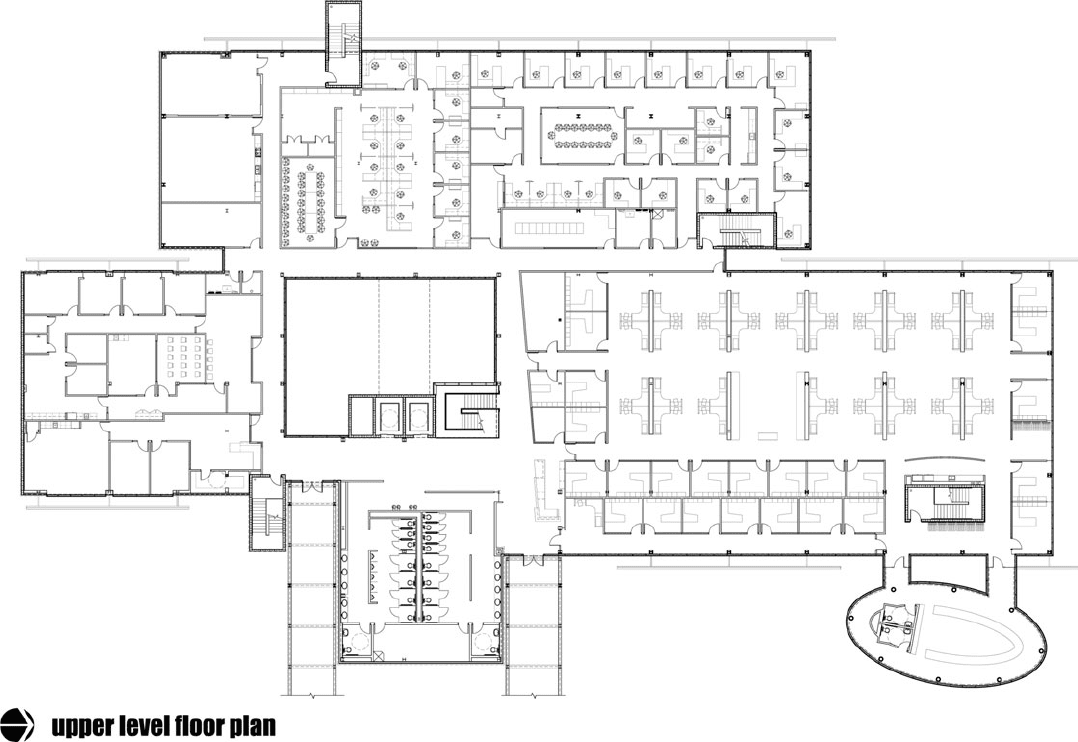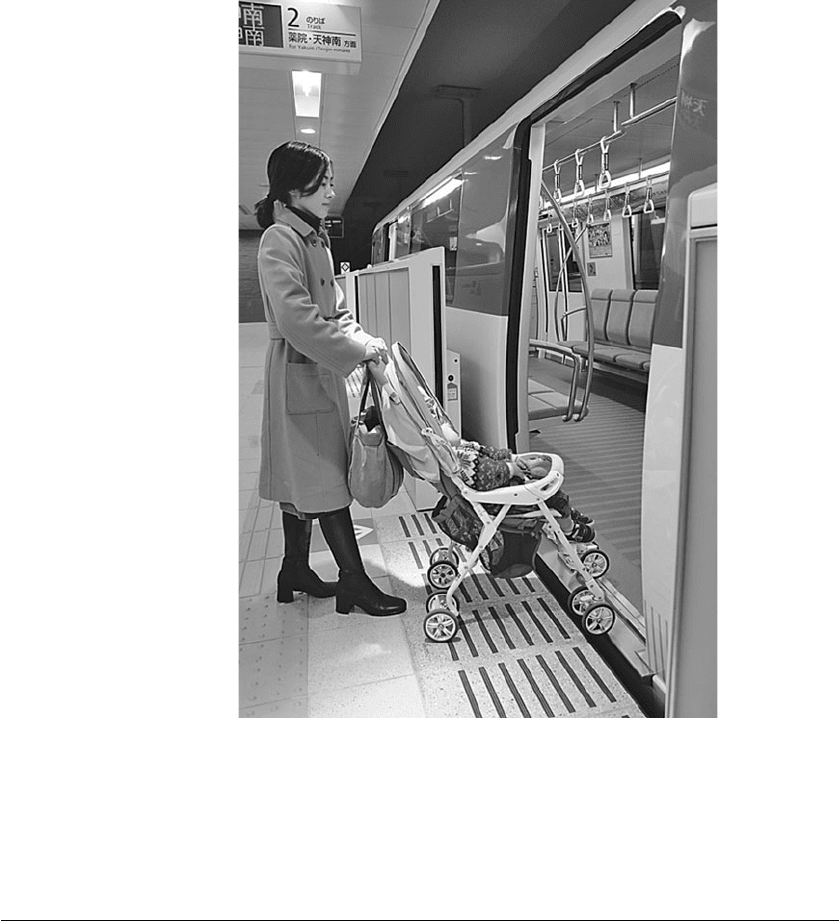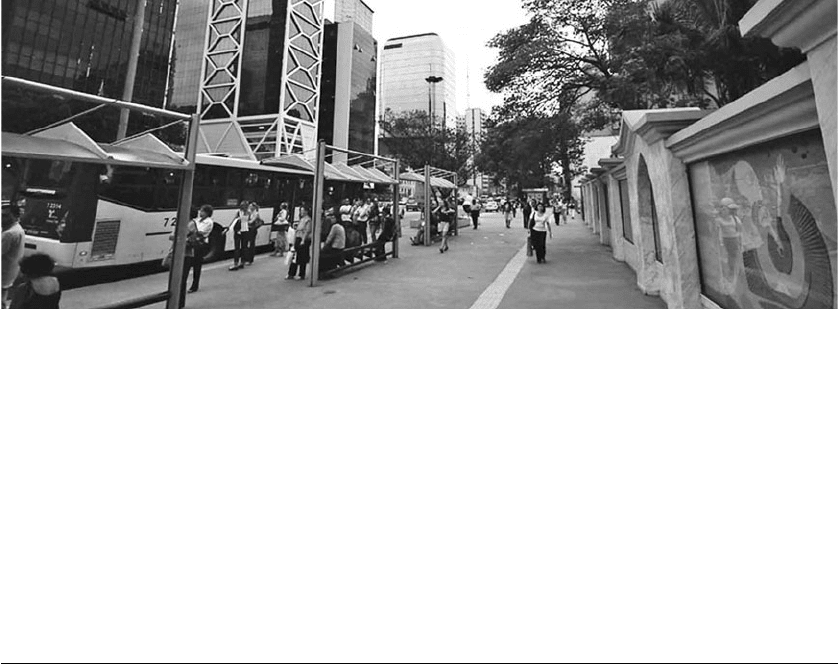Preiser W., Smith K.H. Universal Design Handbook
Подождите немного. Документ загружается.


37.6 EDUCATION AND RESEARCH
An assumption was made at the start that good projects might not use the language of universal
design or its synonyms of inclusive design or design-for-all. The leaders sent the team on a quest
to identify potential projects to bring to the full team for consideration. They suggested initial
resources such as books, articles, conference proceedings, and IHCD’s international database of
designers. Design media, both print and digital, and the web were a constantly expanding resource
of potential projects. The team met weekly to triage and identify gaps in the categories and in the
geographic regions.
37.6 TOOL FOR GATHERING INFORMATION
In addition to generating the prospect list, the full team worked to build a standard instrument for
gathering information. What do we need to know? From whom do we need to get it? What volume
of information would be necessary to write a narrative? What types of images do we need?
It required many iterations of the form and testing of the tool to generate a final Project
Information Form (PIF). The form asked for a mix of factual information, brief essays in response
to questions, and a range of images, especially those illustrating universal design features. The blank
PIF was nine pages long with one page for internal use. The team designed the PIF to be completed
digitally, and almost all were sent and returned via e-mail.
37.7 CHALLENGES
Completing the demanding form required a substantial commitment of time from the design firm,
which proved challenging. Some firms were immediately responsive and quick to return completed
forms. Most quickly agreed to participate, but required repeated requests with deadlines and exten-
sions, sometimes for many months.
The engagement of user/experts (Ostroff, 1997) was one of the questions to designers. As the case
study project evolved, it was clear that a mix of strategies was needed to deliver an accurate understand-
ing of how well the building worked, such as postoccupancy evaluations. There was no fully reliable
measure of exemplary performance without a site visit from a member of the IHCD team, the jury,
or someone based near the project who could provide a user/expert perspective. It was an imperfect
system, but it caught problems that resulted in some case studies being removed from the collection.
Given that there are substantially more examples of universally designed homes than any other
building type, it was necessary to weigh what to include. In the end, IHCD included homes that
integrated universal design and green sensibilities, in addition to being outstanding in the quality of
design or in places where the project was among the first examples of universal design.
There was little question of Japanese leadership in universal design across all design disciplines.
There were major difficulties in getting full information back on Japanese projects unless the pri-
mary contact was directly with a designer who was bilingual in English. Too often, government
officials responsible for universal design initiatives were the primary point of contact and provided
information suitable for a conference presentation, but not for the case study collection. It was nec-
essary to translate the Project Information Form into Japanese, seek out the designer for case study
projects, and translate from the Japanese as necessary. When all conditions were right, as was the
case with the Nanakuma subway line in Fukuoka, the stellar quality of current Japanese work proved
easy to communicate.
Important audiences for the collection were designers, developers, and advocates across a wide
range of nations. Although attention to universal design is growing, IHCD assumed that there
were limited built projects at that time, which proved true. However, some of the finest examples
of inclusive public realm projects came from Latin America. IHCD hopes that the commitment
to maintaining and expanding the web site will result in capturing emerging nations’ projects as
they are built.

FIGURE 37.3 The Disability Empowerment Center (DEC) of Arizona is a 64,000 ft
2
campus that is an adaptive reuse of a 1970s building.
Long description: The floor plan for the upper floor of the Disability Empowerment Center in Phoenix, Arizona, shows the main office floor of the building and the interior
courtyard center core. The plan shows the attention to accommodating a large number of people who use wheeled mobility. Both the functional and circulation spaces are laid out
to enhance seamless navigation. In addition to corridor windows over a central courtyard, all corridors maximize access to natural light and views.
37.7

FIGURE 37.4 Robert Konieczny designed this country home in Ruda S
´
la
˛
ska in southern Poland with priorities for
ease of use and maintenance, inexpensive materials, and extremely efficient energy use.
Long description: The photo montage shows a mix of images of the simple wood and glass exterior and interior of the small
home revealing the concrete path to the front door with dual side lights and floor-to-ceiling windows in the main living space
with an angled glass ceiling that maximizes natural light and warmth in the cold climate.
FIGURE 37.5 Front façade image of one row of Vandkunsten cohousing in Nødebo, Denmark.
Long description: Image shows a view of the front of a row of homes in Egebakken cohousing in Nødebo, Denmark.
Each private entry is marked by a sloping dark gray zinc roof set back from a walkway which is level with the street and
divided by color, texture, and a lit bollard.
37.8

AN INTERNATIONAL WEB-BASED COLLECTION OF UNIVERSAL DESIGN EXEMPLARS 37.9
37.8 CONCLUSION
Initial expectations proved true that the recent transformation of the definition of good design
includes a commitment to environmental sustainability. As concerns and design ideas proliferate
that focus on human health and well-being as defining qualities of sustainable design, there is more
evidence that places that work for people are also environmentally sustainable.
It is also true that places winning attention and awards reveal a trend toward seamless integration
of inclusive design. It is time to celebrate that evolutionary milestone and to understand the motiva-
tions and practices of exemplary practitioners so that they can inspire replication and innovation.
FIGURE 37.6 The Nanakuma Line, opened in 2005, in Fukuoka, Japan, con-
sists of 16 stations and newly designed railcars.
Long description: The photo of the Nanakuma Line in Fukuoka, Japan, shows a
young woman with large bag pushing a baby in a stroller across a level platform
with a bright yellow tactile strip in the pavement and tactile markings along the
edge across a narrow and level gap into the train.

37.10 EDUCATION AND RESEARCH
FIGURE 37.7 The city of Sao Paulo, Brazil, created an inclusive welcoming pedestrian realm in this city of 11 million.
Long description: The photo of Avenue Paulista in Sao Paolo, Brazil, depicts a very wide pedestrian area with zones for walking, street
furniture including benches and shelters, and a boarding area for public transit. The sidewalk measures 25 ft wide, and the surface is smooth
4-in.-thick concrete with precast rubber joints.
There are still frustrating missed opportunities where attitudinal barriers—the “just tell me what
I have to do” mind set—minimize the very real challenge of design that succeeds in transforming
human experience. Unless designers recognize that there are creative frontiers needing explorers and
visionaries in human-centered design, universal design will be condemned to another cycle of rules
outside the engagement and excitement of the design process. If the universal design case study col-
lection succeeds in its mission, it will generate an enticement to be part of something big, to create a
new generation of places that celebrate human diversity while communicating a welcome to all.
37.9 BIBLIOGRAPHY
Lifshez, R., and B. Winslow, Design for Independent Living: The Environment and Physically Disabled People,
Berkeley: University of California Press, 1981.
Mueller, J., “Getting Personal with Universal,” Innovation [the quarterly journal of the Industrial Designers
Society of America (IDSA)], Spring 2004, pp. 21–25.
Ostroff, Elaine, “Mining our Natural Resources: The User as Expert,” Innovation, 16(1), 1997.
U.S. Environmental Protection Agency, Gateway to International Best Practices and Innovations, Washington,
accessed April 6, 2009 at http://www.epa.gov/innovation/international/green.htm.
Walsh, C. J., “Sustainable Human and Social Development: An Examination of Contextual Factors,” in Universal
Design Handbook, 1st ed., Wolfgang Preiser and Elaine Ostroff (eds.), New York: McGraw-Hill, 2001,
pp. 33.1–33.16.
World Health Organization, Towards a Common Language for Functioning, Disability and Health, ICF, Geneva:
WHO, 2002.

CHAPTER 38
TOWARD UNIVERSAL DESIGN
PERFORMANCE ASSESSMENTS
Wolfgang F. E. Preiser
38.1 INTRODUCTION
Following the ratification of the Americans with Disabilities Act (1990), the U.S. federal government
has made a sustained effort in creating research centers through the National Institute of Disability
Rehabilitation Research (NIDRR) and its funding mechanisms. These centers have focused on topics
ranging from housing to transportation, from wheelchair design to information technology, to name
just a few (IDEA Center, 2007). Only one of these centers had been tasked with developing assess-
ment methodologies (N.C. State Center for Universal Design, in collaboration with Jon Sanford at
the Atlanta VA) over the past 10 years. The only other effort in this regard known to the author was
undertaken in Belo Horizonte, Brazil. Based on his dissertation research at the Center for Universal
Design at North Carolina State University, an attempt was made by Guimaraes (2001) to develop
rating scales for the assessment of universal design.
For the emerging field of universal design to mature and be accepted by the general population
and the design and business worlds, it is imperative for it to become operational in terms of demon-
strable and objectively measurable performance criteria. The purpose of this chapter, then, is to cre-
ate a road map toward the development of universal design (UD) assessment methodology.
A conceptual framework for universal design evaluation was outlined by the author (Preiser,
2001) in the Universal Design Handbook (first edition). It represented an extrapolation from the
building performance evaluation framework first developed and presented in Time-Saver Standards:
Architectural Design Data (Preiser and Schramm, 1997), and was based in part on the author’s post-
occupancy evaluation of medical facilities. In recent years, the number and kind of manifestations of
the field of universal design have been rapidly expanding on a global basis, as is evidenced in new
legislation, public initiatives, conferences, and publications.
The promise of UD as an ideology, however, is contrasted by the sober reality of the implementa-
tion of the seven Principles of Universal Design (Story, 2001). In short, the need exists to align the
principles with building and life safety codes, as well as other design guidelines that set benchmarks
of expected building performance.
38.2 EVOLVING ASSESSMENT FRAMEWORK AND METHODS
The history of assessment research in universal design is rather short and consists primarily of case
study evaluations of built projects or developed products, as well as use of expert judgments and
direct, verbal user feedback. Due to the lack of a systematic and comprehensive tool kit of evaluation
38.1

38.2 EDUCATION AND RESEARCH
methodologies, the case studies rely primarily on field-based evidence, which is often anecdotal and
observational. In other words, no comprehensive tool kit for assessing universal design exists to this
date. Evaluations or assessments link evaluation methods with the appropriate criteria according to
which a product or design is judged. Traditionally, and as indicated above, such criteria existed in
codified format, such as codes, American National Standards Institute (ANSI) standards, Time-Saver
Standards, as well as agency-specific standards and guidelines, which have evolved over time. In
some cases, and due to intellectual property protection, such standards are not accessible to the pub-
lic. They are guarded heavily by user agencies, such as the military, chip-making corporations such
as Intel, or global consumer goods manufacturers, such as Procter & Gamble. Since UD primarily
addresses the human dimension of designed products and environments, it makes sense to create an
evaluation framework according to the scale of the item being evaluated (see Table 38.1).
For example, the “Mr. Good Grips” line of kitchen utensils by OXO has been tested, first in the
laboratory and then in thousands of kitchens. Feedback on their performance can be obtained using
consumer suggestions and focus groups. Similarly, at the scale of an automobile, the Japanese have
made the most progress when it comes to universal design features. These can include ramps that
allow a wheelchair user to roll directly into the back of a van, or a driver’s seat that swivels and
allows the driver to enter and exit the vehicle more easily, especially when he or she has limited use
of the legs.
The above framework serves to illustrate the pervasive nature of universal design as it reaches
into virtually every aspect of our life space: at home, at work, or during travel to near and distant des-
tinations. Field-based research using real-world settings and actual users of UD items and features
will generate the basis for knowledge building in universal design performance. A case in point is
the controversy surrounding the use of Segways by persons with disabilities in indoor public spaces
(Watters, 2007a, 2007b), and so is the emerging trend to better accommodate persons with disabili-
ties in tourism, and the travel industry in general.
At this time the only guideposts for universal design assessments are the above-referenced
seven Principles of Universal Design (Story, 2001). The principles were created by the Center
of Universal Design at North Carolina State University and its consultants from throughout the
United States. The principles constitute lofty ideals, accompanied by subsets of guidelines and
design recommendations, which are rather general and not quantified at all. Thus, they are helpful
in pointing the designer into the right direction, but not adequate to let him or her know what to
do in a specific situation.
The challenge is to operationalize the seven principles and to align them with the type of per-
formance criteria standards and guidelines with which designers and planners are accustomed. For
Scale of UD Item Examples of UD Features Assessment Methods Assessment Measures
Fiskars scissors Left-handed use Time/motion study Ease of manipulation/
cutting speed
Appliances; e.g.,
washer/dryer
Left or right mounts Observation
Time/motion study
Verbal feedback
Ease of use
Interior Architecture Hard floors Time/motion study
Observation
Abrasion
Ease of movement
Buildings Wayfinding system Tracking of building users Ease of orientation/
speed of wayfinding
Urban environment Mixed-use vertical
integration
Transportation hub method
Time-lapse video/observation/
still photography
Ease of movement
Different conditions of
crowding
Information technology Global access to services
via the Internet
User feedback
Questionnaire survey
Satisfaction
Speed of access
Efficiency of services
TABLE 38.1 Universal Design Assessment Framework

TOWARD UNIVERSAL DESIGN PERFORMANCE ASSESSMENTS 38.3
example, fire codes clearly spell out the maximum distance from an occupied space to the legal fire
egress location. In staying with this example, various factors play a role in the establishment of such
criteria, such as type of occupancy, construction type, space sizes, and general layout considerations
(e.g., open versus closed/compartmentalized spaces), not to mention any hazardous conditions, such
as seismic or biohazards. In summary, the still-emerging field of universal design has a long way to
go before it can consider itself established, as far as building performance criteria and assessments
are concerned.
As is evident from this book and the multidisciplinary backgrounds of its contributors, a great
number of disciplines are affected by universal design. These range from planners and designers to
facility managers and groups that utilize facilities, especially health care and rehabilitation employ-
ees, as well as individuals dealing with all sorts of disabilities. Therapists and people studying human
behavior and interactions are involved, and so are administrators/managers of communities and
facilities that cater to seniors. Disciplines that are relevant to UD are listed in Table 38.2.
The building industry, especially housing (Preiser, 2006), is also beginning to take note of uni-
versal design by creating and building prototypes of universally designed houses, such as the home
built by the National Association of Home Builders (NAHB) (2002) near Washington, D.C., and a
similar demonstration home by the IDEA Center by the University at Buffalo (Tauke and Schoell,
2010). The question arises whether assessments of these universally designed homes have been done
in a thorough manner, if at all, and whether the lessons that have been learned will be applied to
future generations of such homes.
Furthermore, information technology is a particularly fertile ground for exploring universal
design concepts. Just consider how the VISA card, perhaps the most universal of all universal
designs, has revolutionized the business world by permitting customers to carry out transactions in
several hundred countries with different banking systems and currencies. The VISA card provides
true universal access to merchants and services on a global basis (Hock, 2005).
38.3 EXAMPLES OF CULTURAL, LEGISLATIVE, AND
PROFESSIONAL ISSUES
Disability is conceptualized differently across various cultures, including diverse subcultures within
the United States. One example is the concept of “visitability,” which connotes the ability of a person
with disabilities to enter a place, but not necessarily to live in it (Nasar and Evans-Cowley, 2007).
TABLE 38.2 Universal Design—Relevant Disciplines
Discipline Examples of Universal Design Applications
Industrial Design See 3 sub-fields below
Product Design Utensils, tools, furniture, equipment
Graphic Design Directories and guidance systems
Fashion Design Clothing for various disabilities
Interior Design Accessible design of dwellings, offices and other spaces and places
Architecture Equal access and circulation for all user groups and levels of disabilities
Urban Design and Planning Accessible design of transportation facilities, university campuses and
communities in general
Information Technology Access to services and Internet commerce
Health Facilities Planners Accessible hospital, rehabilitation and care facilities
Administrators Enlightened governance regarding accessibility in organizations
Facility Managers Operation and maintenance in line with accessibility requirements
Environmental Psychologists Research in support of constituencies with disabilities

38.4 EDUCATION AND RESEARCH
Due to the lack of operational performance criteria, codification of universal design assessments
has not progressed enough. Ideally, UD assessments should relate to regulatory devices such as
building codes, but should also transcend the minimum requirements of the ADA. There are ethical
dilemmas and potential conflicts of interest and litigation in cases where universal design and its
potential are not achieved, e.g., in senior living communities. Segways (Watters, 2007a, 2007b) can
aid persons with disabilities in navigating through neighborhoods, shopping centers, and establish-
ments such as Barnes & Noble bookstores, but they can also create controversy in the business world
for safety reasons and fear of litigation.
Some tourist destinations and cruise lines improve accessibility for disabled persons (Craeger,
2007). For example, the Rocky Mountaineer Railtour from Vancouver, British Columbia, to Calgary,
Alberta, provides spectacular vistas of the Canadian Rockies. It features an elevator to lift wheel-
chair users to the top level of railcars. Near Newport, Oregon, at Yaquina Head Outstanding Natural
Area, wheelchair users can roll on paths around the tide pools at low tide. At Fantastic Caverns near
Springfield, Missouri, a tram “follows an ancient riverbed and gives visitors a great look at some of
the magnificent stalactite and stalagmite formations” (Harrington, 2008).
38.4 NEEDED ASSESSMENT METHODS—CREATING
A RESEARCH AGENDA
The goals of creating a universal design assessment research agenda are twofold: (1) To collaborate
with colleagues in the emerging field of universal design (called inclusive design or design for all in
Europe), in an effort to create a research agenda which will advance it to the next level of pragmatic
application in the real world; and (2) more specifically, to develop a tool kit of methodologies.
Tables 38.3 and 38.4 constitute the rather complex universe of data-gathering methods and mea-
sures. When they are utilized in a selective fashion, it is hoped that this will allow universal design
solutions to be evaluated in a systematic manner. Furthermore, this could support the creation of
performance criteria, which relate to regulatory mechanisms such as zoning and health and safety
codes. Functional requirements can be developed, as documented in design guides for different
building and space types. Finally, psychological and cultural needs of the users of universal design
can be distilled.
In adopting the field of human factors as a possible role model for evaluative research, it
becomes clear that a comprehensive universal design assessment framework implies a sophisticated,
multimethod approach. This would involve hard and quantitative as well as subjective and qualitative
measures with a focus on the human-environment interface. Furthermore, it would include field and
laboratory studies of spatial, physiological, psychological, and even cultural dimensions of universal
design.
For universal design to transcend its “soft” ideals and to be taken seriously in the pragmatic
world of planning, designing, and construction, a rigorous and accountable approach must be taken
in measuring and analyzing universal design performance. Just as in the precedent-based medical
diagnoses or legal determinations, universal design needs to move into the direction of “hard”
science and facts, Multiple medical diagnoses or legal precedents form the basis of acceptable
TABLE 38.3 An Overview of Data Gathering Methods and Measures
1. Behavioral Observations Behavior Inventory and Taxonomy
2. Mechanical Recordings Occupant and Environment Patterns
3. Visual Recordings Occupant and Environment Change
4. Physical Measurements Physical Measures
5. Verbal Response Measurement Perceived Performance Measures
6. Expert Judgment Point Ratings

TOWARD UNIVERSAL DESIGN PERFORMANCE ASSESSMENTS 38.5
TABLE 38.4 Detailed Data Gathering Methods and Measures
1. Behavioral Observations
Direct Observation
Participant Observation
Behavior Inventory and Taxonomy
• Behavioral Mapping
• Behavioral Identification/Classification
• Occupant Tracing
• Interaction Patterns/Dynamics
• Social Dynamics
• Utilization of Resources
2. Mechanical Recordings
• Counting
• Event Recording
• Light Sensor Gate/Contact Switch Plates
• Location Mapping
Occupant and Environment Patterns
• Frequency of Events
• Space Use
• Location of Occupants
• Use of Preferred Spaces/Resources
3. Visual Recordings
Still Photography
Video Recording
Time-Lapse Photography
Occupant and Environment Change
• Space Inventory
• Archival Records/Photo Annotation
• Ambient Environment Quality (Color, Light)
• Macro and Micro Behavior
• Occupant Movement
• Conflict Identification
• Behavior Sequences
• Occupant Speed/Tracking
• Individual vs. Group Interaction
4. Physical Measurements
• Gauge
• Chemical Test Kit
• Scale
• Light Meter
• Sound Meter
• Inclino-Meter
Physical Measures
• Temperature
• Humidity
• Air Velocity
• Light
• Chemical Agents
• Abrasion
• Elasticity
• Live-loads
• Decibels
• Light Levels
5. Verbal Response Measurement
Occupant Interviews
Occupant Surveys
Perceived Performance Measures
• Generic/Open-Ended Questions
• Forced Choice Questions
• Numeric Ratings
• Generic/Open-Ended Questions
• Forced Choice Questions
6. Expert Judgments
• Aesthetic Quality Comparisons
• Point Rating Systems
“truth” or evidence that has been proved in the real world. Medical therapy or legal fixes are predi-
cated on knowledge vetted in databases and clearinghouses that could specialize in types of products,
buildings, infrastructure, as well as information technology. As such, the author envisions three next
steps to progress in this endeavor:
1. Prior to the creation of a conceptual framework for universal design performance assessment,
there is the need for the development of a distinct and widely accepted terminology. An example
